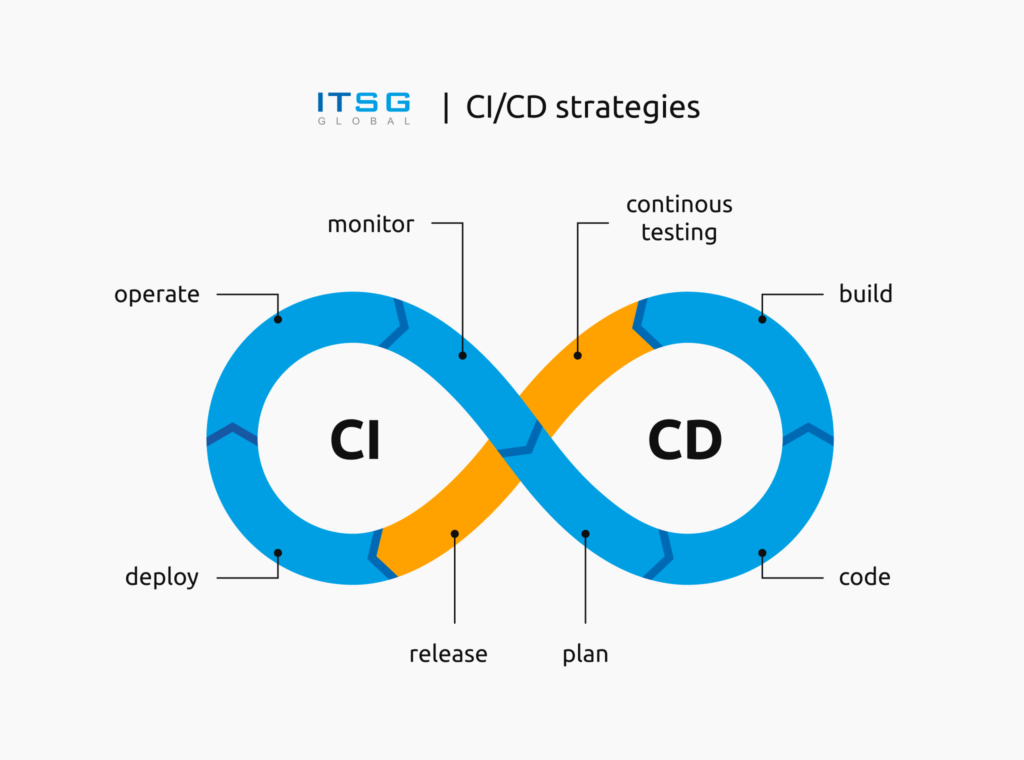Legacy System Health Check: Your First Step Towards Transformation
Welcome to an era of unprecedented digital advancement. It’s a time when technology isn’t just evolving— it’s moving fast. Yet, amid this landscape of continuous innovation, a staggering 78% of organizations find themselves anchored by outdated systems. These systems often become the silent bottlenecks, hindering not just technological growth but also affecting operational efficiency and strategic agility. The dilemma is twofold: how to sustain existing systems that are deeply embedded in your business processes, while simultaneously formulating a robust strategy for modernization. This is not merely a technical challenge; it’s a critical business decision that rests on the shoulders of today’s CXX-level decision-makers.
Whether you’re looking to optimize costs, accelerate your time-to-market, or open doors to new market opportunities, this guide provides you with the tools and insights you need for an honest, effective transformation.
IS IT FOR ME?
If you find yourself wrestling with these complex issues, you’re not alone. The path to transformation is fraught with decisions that have far-reaching implications on costs, team dynamics, customer experiences, and market adaptability. Based on our experience we built methodology and tools to help you with that.
But first check if you are affected, by checking our checklist below. A checklist to determine if Legacy System Health Check is for you:
1. Total Cost of Ownership (TCO) Concerns
- Are ongoing maintenance costs skyrocketing?
- Struggling to find skilled programmers for your project?
- Is adding new features becoming prohibitively expensive?
- Does your production cycle involve too much manual work?
2. Limited Innovation Capabilities
- Do you find it difficult to develop new system features?
- Is your system incompatible with emerging technologies?
- Can’t integrate swiftly with other modern tools and systems?
3. Safety & Regulatory Issues
- Are you not meeting required industry standards?
- Do you have unresolved security vulnerabilities?
- Failing to maintain backward compatibility with documentation?
4. Business Risks
- Are customer complaints about system functionality increasing?
- Experiencing more unplanned system outages than before?
- Are competitors introducing better solutions more quickly?
5. ESG Readiness
- Is your legacy system hindering your ESG (Environmental, Social, Governance) compliance efforts?
WHAT YOU’LL ACHIEVE WITH OUR SOLUTION?
The Ultimate Roadmap for Your Legacy Systems
Imagine having a roadmap so precise it not only tells you which paths to take but also the potential pitholes to avoid. With a Legacy System Health Check guided by our proprietary ELSAF framework, you gain a meticulously detailed plan for your legacy systems. This goes beyond the mere do’s and don’ts; you’ll know the ‘why’ and ‘how,’ along with the ‘what’ and ‘when.’
Unbiased Insights for Honest Transformation
Our external evaluation eliminates the bias that might skew internal assessments. We give you an unvarnished view, free from internal politics, that provides a clear picture of your systems’ strengths and weaknesses.

Organizational Benefits
Implementing ELSAF’s framework brings wide-reaching benefits:
- Cut costs in IT and software development
- Improve your developers’ job satisfaction
- Become nimble in market adaptation
- Open doors to new markets
- Focus more on growing the business rather than maintaining systems
- Improve your time-to-market
- Enhance customer experiences
CASE STUDY: GLOBAL CONSULTING FIRM STREAMLINES QUALITY ASSURANCE
Problem
The firm had quality issues with their internal systems. The internal team’s analysis was neither thorough nor unbiased.
Solution
We established an external QA team, implementing the ELSAF framework to streamline the process.
Results
Reports from this external team are now a cornerstone in the firm’s quality assurance, leading to unbiased, well-prioritized, and actionable insights.
In essence, our Legacy System Health Check using ELSAF isn’t merely a diagnostic tool; it’s your strategic ally in shaping the future of your systems. The outcome isn’t just a report, but a blueprint for progress, giving you a tangible strategy for forward movement.
Legacy System Health Check – report with roadmap to help you to make decission
You will receive a detailed report outlining:
- Understanding of Your System’s Health: through a detailed risk assessment, identify critical problems ranked by severity, understand costs associated with mitigation, and recognize areas for strategic investment.
- Informed Decision-making Insights: receive recommendations for next steps such as investment, maintenance, retirement or consolidation of the system, or shifting resources to build new solutions for long term replacement.
- Development process and agility level evaluation: analyse the process of development and maintenance in context of Agile software development practices and CI/CD practices. Provide guidance on agile transformation steps.

- Strategies for Green Impact & Cloud Readiness: a detailed analysis will identify deficiencies and provide remediation strategies, as well as outline cloud readiness, including a roadmap and potential blockers.
- Business Impact : in detail, you will gain an issue list ranked among business impact and system health.
OUR APPROACH
ELSAF Framework
In the ever-changing world of technology, having a reliable and adaptive approach to system modernization isn’t just an option—it’s a necessity. That’s where the ELSAF framework comes into play. Our methodology doesn’t just stem from a hypothetical ideal; it’s a culmination of over 15 years of hands-on experience in engineering complex systems. But we didn’t stop there. We’ve also deeply invested in learning from state-of-the-art approaches and best practices, drawing insights from seminal works like “Accelerate,” which has become a cornerstone in understanding software delivery performance and organizational culture.
The result? A framework built on four rock-solid pillars, each designed to address critical aspects of system modernization:
- Evolutionary Architecture: your roadmap will feature incremental architectural improvements targeting modularity and loosely-coupled architectures. End result? Enhanced agility to adapt to business changes.
- Testable Architecture: by prioritizing test automation, we create a continuous cycle of improvement. This results in fewer bugs, reduced manual testing costs, and quicker deployment times.
- Evolutionary Code: continuous code refactoring means you’re not just maintaining your system; you’re actively improving it. You’ll deliver new features without the technical debt.
- Living Documentation: with automated, up-to-date documentation, everyone—tech and non-tech stakeholders alike understands how the system operates. This is a game-changer in speeding up decision-making and reducing misunderstandings.
GenAI tools
To improve project even faster we use GenAI tools to help your team move forward with knowledge. Here’s how we achieve it:
- AI-Leveraged Reverse Engineering allows us to get to the core of legacy systems quickly. Using Generative AI, our tools understand the code’s underlying structures, data flow, and logic. This empowers our senior engineers to identify areas for modernisation, aligning with the latest technology trends.
- Analysing Dependencies involves a thorough investigation of how different parts of the system interact. Our teams and tools can provide insights into complex dependencies and relationships, allowing for a well-informed strategy to optimise system architecture.
- Uncovering Hidden Knowledge: As an external team armed with cutting-edge tools, we glimpse the truth behind the complexities of your system. We reveal and translate the knowledge that has been siloed or obscured, providing a clear, unbiased view of what is truly there.
- Analysing Development Process: taking into account our experience, we will look at your complete development process, illustrating how an idea is transformed into production-ready functionality, we will give You some examples how it fits to CI/CD principles and Agile methodologies
PROJECT ORGANIZATION AND DELIVERABLES
Initial Steps
Before diving into the nitty-gritty, some housekeeping is in order. First off, we’ll sign a Non-Disclosure Agreement (NDA) to ensure all discussions and findings remain confidential. Once that’s squared away, we’ll kick off the project by assembling your core team and ours. Together, we’ll determine the best strategies for granting secure access to necessary assets—like documentation, code, and environment setups—and discuss the involvement of your current team members in the process. This initial stage sets the foundation for a seamless workflow and open lines of communication.
Ongoing Engagement and Final Deliverables
Communication is key, so we’ve planned weekly workshops to discuss our findings and steer the project in real-time, based on what we uncover. These regular checkpoints allow us to adapt our strategies and keep everyone in the loop. After concluding the health check, we’ll present a detailed final report. This isn’t just a list of issues; it’s a comprehensive risk assessment covering software health, composition, and the system’s viability for future projects. With this in hand, you’ll have a clear understanding of your system’s current state and a roadmap for future decisions.
Final report presentation
You will receive a detailed report outlining the following:
- Risk Assessment: including software health, composition, and ability to move forward, allowing you to understand critical problems and their severity.
- Recommendations for Next Steps: guidance on investment, maintenance, retirement or consolidation of the system, or shifting resources to new solutions.
- Alignment with ELSAF Framework: a modern, agile, value-oriented, evolutionary approach that uses our proprietary ELSAF framework, ensuring quality and adherence to best practices.
- Green Impact Analysis & Cloud Readiness: identify environmental deficiencies and provide remediation strategies, along with a roadmap and potential blockers for cloud transition (optional).
Because we believe that you know your business needs best, we have prepared packages which vary in the scope of work we will carry out within Legacy System Health Check.

CONCLUSION AND NEXT STEPS

Don’t let legacy systems be the roadblock on your path to innovation and growth. With a Legacy System Health Check driven by the ELSAF framework, you won’t just get a diagnosis—you’ll receive a strategic blueprint that aligns with both your present challenges and future aspirations.
Ready to take the next step? Contact Kamil Grzybek – our Head of Software Development to kickstart your journey toward a more agile, efficient, and forward-thinking operation.